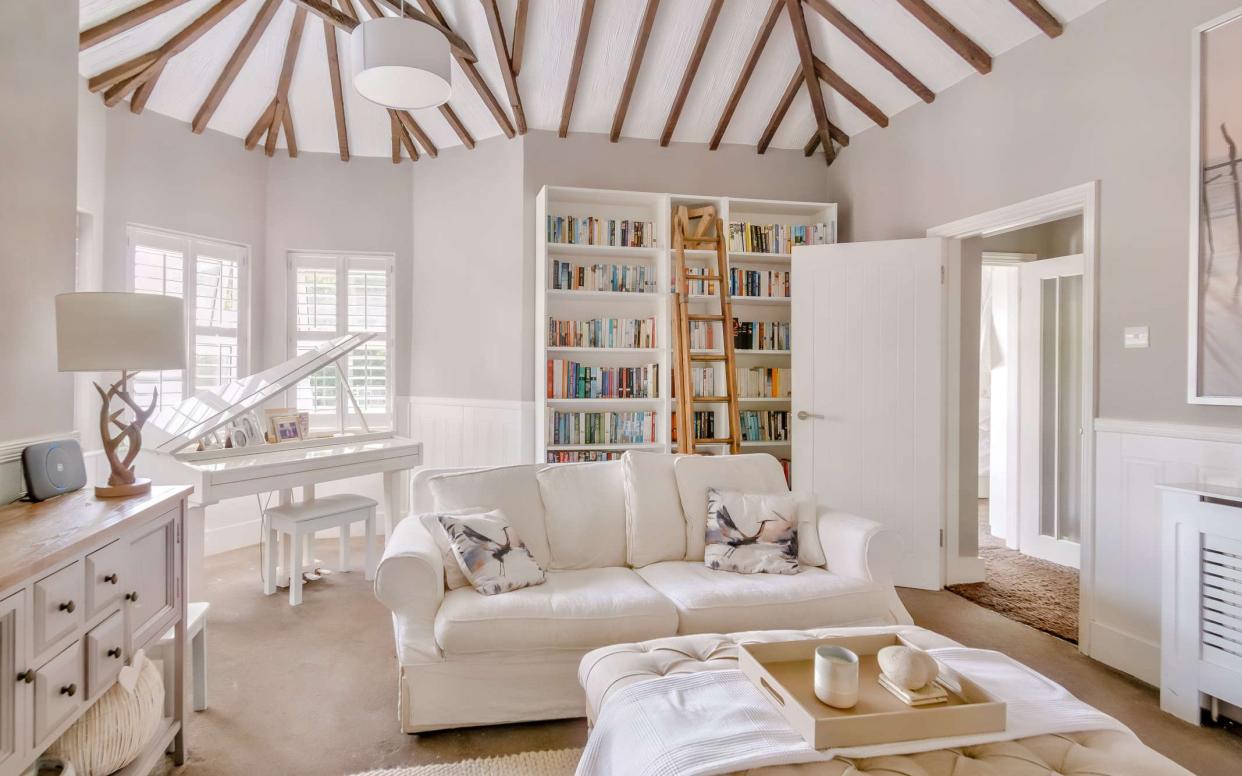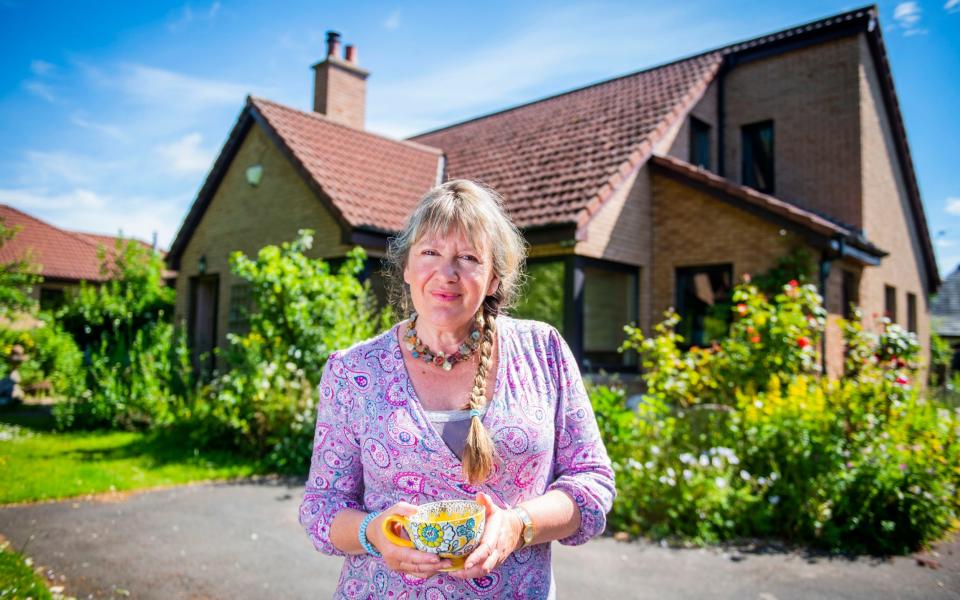Why now is the best time in years to downsize your home

Clive and Gina Collins are a practical sort of couple. Barely had their youngest daughter left home before they began to consider what to do with the family house they had lived in for 26 years. Last summer, after a pandemic spent ruthlessly decluttering, their decision was made. They sold the 1920s house and moved into a brand new apartment.
Their timing has been impeccable. A perfect storm of factors – household bills rocketing, interest rates rising and warnings that house price growth will start to taper off – means that there has rarely been a better time to downsize.
As mortgage rates rise, the market could now be peaking. Buying agent Camilla Dell of Black Brick, said savvy downsizers were already trying to “cash in before the market takes a turn”.
Lucian Cook, of estate agency Savills, agreed that the market appeared to be at a turning point.
“But we have just had a strong burst of house price growth, the first for several years, and that means the gains made on an existing home will far outweigh the increased costs of buying a smaller property, even with stamp duty,” he said. “And as we go into winter, the cost of running and heating a larger home will start to become a greater issue.”
‘I would have been spending £1k a month on bills’
The Collinses, both 62, had raised their two daughters in a five-bedroom house in Bushey, Hertfordshire. With its large garden it was a great home for children, but Mr Collins was keenly aware how much it cost to maintain.
“With gas and electricity going through the roof I would probably have been spending £800 to £1,000 a month on bills if we had stayed,” he said. “It also cost a lot to pay gardeners and cleaners.”
New research from estate agent Purplebricks suggested that many other homeowners were making similar calculations. More than half of all house hunters would be willing to downsize if it would cut their bills, it found. Of those in the process of downsizing, 60pc were doing so specifically to reduce household costs.

Tom Greenacre, of Purplebricks, said: “People’s concerns over increasing energy bills are now translating into real action. Some are taking the significant step of downsizing their home and are moving somewhere smaller to save on household bills, a reversal of the ‘race for space’ we saw at the start of the pandemic.”
The Collinses sold their family house for £1.255m. Their apartment, at Squires Park, Bushey, which they share with their dog, Teddy, cost £860,000. They spent some of the equity they released on furnishing their new home and put the rest into a pension.
Over the past year, while most of the country despairs at rising bills, the couple have seen their living costs drop. Their power bills are down from £450 a month in their old home to around £250 a month.
Beyond releasing equity by buying a more modest home, the day-to-day savings of downsizing can be significant. A study by the AimC4 project suggested that domestic gas and electricity costs were around £15 per sq m per year. Bills have gone up dramatically since the research was done, so these costs are now likely to be closer to £25 per sq m. So moving from a 140 sq m (1,500 sq ft) house to a 65 sq m (700 sq ft) flat should save almost £2,000 a year in bills.
Moving to a more walkable area can also pay, because driving currently costs around 40p a mile, according to the car insurer Nimblefins. Driving five miles to a nearby town three times a week would, on this basis, cost more than £600 a year. And buying a less expensive home will often cut your council tax bills too, although local costs are something of a lottery.
‘It was a big house with a big garden to look after’

Alison and Douglas Gibb’s motives for downsizing were more about meeting their future needs than cutting current living costs. The couple met at art school and bought their six-bedroom house in Gullane, 18 miles east of Edinburgh, in the early 2000s for £316,000.
Although the couple, who have two children in their 20s, have made contributions to a pension over the years, they were painfully aware that they had not put enough aside to live on in retirement. “We had put more into the house,” said Mrs Gibb, 56. “So we always knew that when we stopped working we would need to sell it and downsize.”
But during the pandemic Mr Gibb, 58, who had earned the family nickname of “the janitor” because of all the work he did on the house and garden, started to feel that those plans should be brought forward. “He started to say that life was too short,” said his wife.
“It was a big house with a big garden to look after and he just wanted to free himself to work less and live more.”
In September 2020, they sold the house for £725,000 and later bought a four-bedroom house near Berwick-upon-Tweed for £325,000. Their new home is not only smaller than their old one but more energy efficient. As a result, despite rising fuel costs, their energy bills have dropped from £193 a month to £150.
As the couple are self-employed – Mr Gibb is a photographer and his wife a journalist – they needed the capital they had freed up by downsizing to provide them with a long-term income.
“We are not into spreadsheets and yields, so we really agonised about what to do with the money,” said Mrs Gibb. Eventually they decided to invest in property and bought a pair of flats in Edinburgh to rent out.
The Collinses and the Gibbs opted to downsize in their 50s and 60s, and, according to research from Savills, these younger age groups are now far more willing to relinquish their family home than older generations.
Owners in their 50s, for example, own around 22pc of Britain’s property stock and are responsible for 21pc of all sales. Those in their 60s hold 19pc of property stock and make 13pc of moves. But those in their 70s and above, despite owning almost a quarter of all properties, account for only 8pc of house moves.
‘It is something we just had to get on with’

Not long ago Linda and Christian Pegley thought they would live in their family home for ever. They had moved to their three-bedroom cottage on the eastern fringes of Dartmoor in 1983, paying £18,000 for the property. In 2001 the neighbouring cottage came up for sale and they bought it for £78,000. They amalgamated the two properties into a six-bedroom home for them and their two sons, who are now grown up.
Mr Pegley, 74, retired six years ago and devoted himself to the house and its two acres of garden. But after Mr Pegley, who has Parkinson’s, had a couple of bad falls in the sloping garden, they decided to move to a more practical, less remote home. They sold their Dartmoor house for £630,000 and paid £525,000 for a three-bedroom bungalow at the Little Cotton Farm development near Dartmouth.
The couple have invested the bulk of the capital they released in their new home, building a glass-topped veranda, from which they can see the sea, and landscaping the garden.
Today, Mr Pegley said he had mixed feelings about the move. Having neighbours nearby has taken some getting used to after almost 40 years of perfect solitude. On the other hand, their household bills are lower, as are their transport costs, since Dartmouth is nearby. More importantly, their new, flat garden is a lot easier to cope with, and having people living nearby means help is at hand should the couple need it.
“It is something we just had to get on with,” said Mr Pegley.
Reader Service: Is downsizing the right move for you? Learn how equity release works could help you stay in your own home for retirement.

